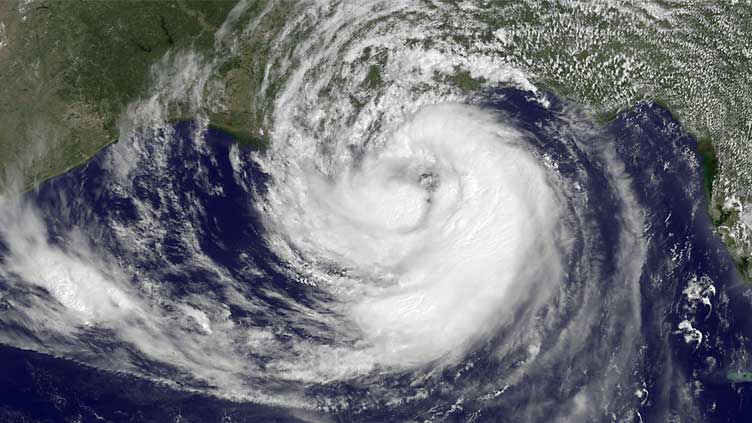Key facts about cyclones

Pakistan
Cyclone Biparjoy has been categorised as a Very Severe Cyclonic Storm (VSCS)
KARACHI (Dunya News) – Authorities in Pakistan have issued an alert about cyclone Biparjoy which is likely to hit the coastal belt of southeast Sindh coasts by June 15 afternoon as a Very Severe Cyclonic Storm (VSCS).
The National Disaster Management Authority (NDMA) said the cyclone could cause strong winds, torrential rains, and floods in coastal areas of the province.
In meteorology, a system of winds that are rotating inwards to an area of low barometric pressure, such that in the Northern Hemisphere it is anticlockwise and in the Southern Hemisphere it is clockwise circulation is called a cyclone.
A cyclone is a general term for a weather system in which winds rotate inwardly to an area of low atmospheric pressure. A tropical cyclone is a rotating low-pressure weather system that has organized thunderstorms but no fronts. They form over warm ocean waters.
Cyclones are formed with an enormous amount of energy from the ocean to the atmosphere. According to studies, every year there are 70 to 90 cyclonic systems developed across the globe. The surface winds get spiralled towards the low-pressure system due to the Coriolis force.
The cyclonic systems are not formed in the equatorial regions because the Coriolis force is negligible between the latitudes 5 degrees north and 5 degrees south.
The NDMA has directed the authorities concerned in Pakistan to run an awareness campaign in the local language to inform residents of the coastal areas of weather conditions and advise them against visiting the shorelines.
Fishermen should avoid boating in the open sea. Follow and cooperate with local authorities in emergency situations,” it added.
The cyclone is known to have different names in different regions of the world, and this is called as hurricane in Caribbean sea, typhoon in China Sea, tropical cyclone in Indian Ocean, Taifu in Japan, wily willies in Northern Australia, and tornadoes in USA.
The formation of cyclones takes place in low-pressure areas. The vulnerability of the place where the cyclone strikes depend on the topography, intensity and frequency of the cyclone.
There are six factors that can be held responsible for the formation of the cyclone including ample amount of warm temperature at the surface of the sea, instability in the atmosphere, how the Coriolis force is impacting the area so that low-pressure area can be created, when the humidity is high in the lower to middle levels of the troposphere, disturbance in the pre-existing low-level area and when the vertical wind shear is low.
There are different terminologies defining the intensity of cyclones
• L — Low-Pressure Area
• D — Depression (17-27 knots)
• DD — Deep Depression (28-33 knots)
• CS — Cyclonic Storm (34-47 knots)
• SCS — Severe Cyclonic Storm (48-63 knots)
• VSCS — Very Severe Cyclonic Storm (64-89 knots)
• ESCS — Extremely Severe Cyclonic Storm (90-119 knots)
• SuCS — Super Cyclonic Storm (120 knots)
Cyclone Biparjoy has been categorized as a Very Severe Cyclonic Storm (VSCS).







